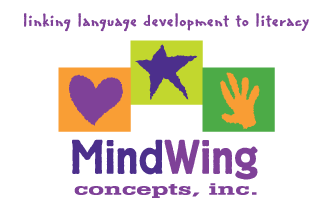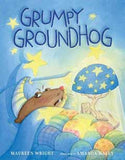Menu
-
- Home
-
About Us
-
The Approach
-
Linking Language & Literacy
-
MindWing Learning
-
Learning Resources
-
SHOP
-
Blog
-
- About MindWing
- Our People
- Contact Us
- Your Account
- Login
-
Spain (EUR €)

MindWing Concepts Blog

St. Patrick’s Day Lesson on Settings: “The Leprechaun’s Gold”
March 08, 2019
 On a recent visit to Springfield’s Sixteen Acres Library, I was pleased to see a large display of books related to St. Patrick’s Day. One that caught my eye is The Leprechaun’s Gold written by Pamela Duncan Edwards and illustrated by Henry Cole. After reading The Leprechaun’s Gold, I immediately thought that this would make a great lesson to focus on how a change in the Setting signified a new episode, and how all three of the settings and episodes in this picture book overlap, as so often happens in chapter books. There are so many other aspects to this book also, such as character interactions and comparisons, and developing skills in identifying character traits. The book also lends itself to a quick project using a shamrock cut-out...
On a recent visit to Springfield’s Sixteen Acres Library, I was pleased to see a large display of books related to St. Patrick’s Day. One that caught my eye is The Leprechaun’s Gold written by Pamela Duncan Edwards and illustrated by Henry Cole. After reading The Leprechaun’s Gold, I immediately thought that this would make a great lesson to focus on how a change in the Setting signified a new episode, and how all three of the settings and episodes in this picture book overlap, as so often happens in chapter books. There are so many other aspects to this book also, such as character interactions and comparisons, and developing skills in identifying character traits. The book also lends itself to a quick project using a shamrock cut-out...

Feelings Activities with Dr. Seuss “Cat in The Hat” and “Marco Comes Late”
February 27, 2019
 As you know, March 2nd is the birthday of Dr. Seuss. He was born right around the corner from our MIndWing office here in Springfield, MA. Yesterday, I visited the Springfield Library to get a copy of The Cat and The Hat so I could share a lesson suggestion related to feelings. Along with that book, I found a copy of Horton and the Kwuggerbugs and Other Lost Stories. These stories were originally published in Redbook magazine between 1950-1955. Charles Cohen, a collector of all things Seuss, put together four of these selections in this book. Following The Cat and The Hat activity is an SGM analysis of one of those stories: “Marco Comes Late”...
As you know, March 2nd is the birthday of Dr. Seuss. He was born right around the corner from our MIndWing office here in Springfield, MA. Yesterday, I visited the Springfield Library to get a copy of The Cat and The Hat so I could share a lesson suggestion related to feelings. Along with that book, I found a copy of Horton and the Kwuggerbugs and Other Lost Stories. These stories were originally published in Redbook magazine between 1950-1955. Charles Cohen, a collector of all things Seuss, put together four of these selections in this book. Following The Cat and The Hat activity is an SGM analysis of one of those stories: “Marco Comes Late”...

Tech Tuesday: Supporting Narrative Development and Emotional Vocabulary
February 18, 2019

Illustration by Ariel Davis for NPR
I’m a big NPR person. It’s a great resource for listening, and for narrative! This past month I was intrigued by a feature on “EMOTIONAL GRANULARITY”—being able to name or describe your emotions more specifically. The author described an increase in stress in his life being alleviated by his working on “learning more emotion words and emotion concepts from one’s culture.” There was research to support his assertion that this self-identification was of help; according to Kashdan, Barrett, and McKnight (2015), “evidence suggests that interventions designed to improve emotion differentiation can both reduce psychological problems and increase various strands of well-being.” We can reframe this information in the light of what we might usually address as speech-language pathologists and literacy interventionists...

Valentine’s Day Activities With Llama Llama and Gilroy Goat
February 04, 2019
 Valentine’s Day was always one of the most enjoyable days for students when I taught kindergarten, and Anna Dewdney’s Llama Llama books were popular with this age group. Llama Llama Be My Valentine! is a Penguin Young Reader book based on an episode of Llama Llama’s animated Netflix television series. Below are some of the ways I used this selection recently with groups of kindergarten and first graders of varying skill levels. Modify as you wish, depending on your goals/objectives and students...
Valentine’s Day was always one of the most enjoyable days for students when I taught kindergarten, and Anna Dewdney’s Llama Llama books were popular with this age group. Llama Llama Be My Valentine! is a Penguin Young Reader book based on an episode of Llama Llama’s animated Netflix television series. Below are some of the ways I used this selection recently with groups of kindergarten and first graders of varying skill levels. Modify as you wish, depending on your goals/objectives and students...

Tech Tuesday: ASHA Beantown Wrap-up, Part 2: Telepractice
January 28, 2019 1 Comment
 First of all, you may wonder, what is telepractice? And, if you are not so interested in the answer, this post will still have some tech-related ideas for you to apply in your “in-person” therapies. To quote ASHA’s resource page on telepractice: “Telepractice is the application of telecommunications technology to the delivery of speech language pathology and audiology professional services at a distance by linking clinician to client or clinician to clinician for assessment, intervention, and/or consultation.” All of the exact same principles and practices of intervention via in-person therapies apply to telepractice, just the method of delivery is different. Telepractice is often conducted via a secure web portal such as Zoom, allowing clinicians and clients on the other side to communicate via microphone and webcam, and using visual and interactive tools to conduct activities (e.g., screensharing, giving the client control of the screen for clicking and dragging)...
First of all, you may wonder, what is telepractice? And, if you are not so interested in the answer, this post will still have some tech-related ideas for you to apply in your “in-person” therapies. To quote ASHA’s resource page on telepractice: “Telepractice is the application of telecommunications technology to the delivery of speech language pathology and audiology professional services at a distance by linking clinician to client or clinician to clinician for assessment, intervention, and/or consultation.” All of the exact same principles and practices of intervention via in-person therapies apply to telepractice, just the method of delivery is different. Telepractice is often conducted via a secure web portal such as Zoom, allowing clinicians and clients on the other side to communicate via microphone and webcam, and using visual and interactive tools to conduct activities (e.g., screensharing, giving the client control of the screen for clicking and dragging)...

Teaching Perspectives with “Grumpy Groundhog”
January 22, 2019
 Last year, we got a lot of great feedback on our Groundhog Day blog, “6 Books and Activity for Groundhog Day.” Teachers seemed to especially like the last idea included in the blog, describing the groundhog’s burrow (from a List Map to a setting project, to sharing aloud). Check out last year’s blog if you haven’t seen it already! I came across another book presented in rhyme for Groundhog Day, Grumpy Groundhog written by Maureen Wright and illustrated by Amanda Haley. Below are a few ideas to use with this selection...
Last year, we got a lot of great feedback on our Groundhog Day blog, “6 Books and Activity for Groundhog Day.” Teachers seemed to especially like the last idea included in the blog, describing the groundhog’s burrow (from a List Map to a setting project, to sharing aloud). Check out last year’s blog if you haven’t seen it already! I came across another book presented in rhyme for Groundhog Day, Grumpy Groundhog written by Maureen Wright and illustrated by Amanda Haley. Below are a few ideas to use with this selection...
